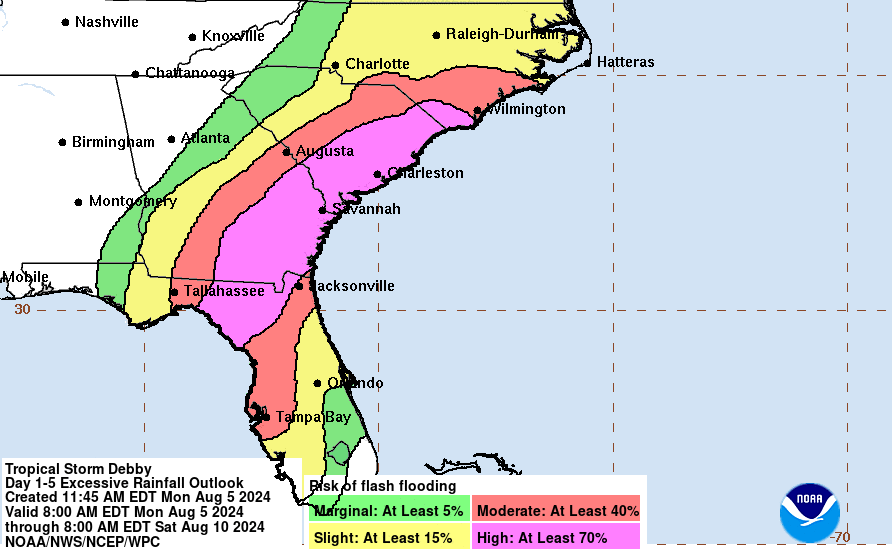Since my previous post on Monday morning, Tropical Storm Ernesto did indeed form later that day, becoming the season's fifth named storm. The center passed over Guadeloupe then the Virgin Islands, dumping hefty rainfall totals over the Leeward Islands and Puerto Rico. It was upgraded to the season's third hurricane on Wednesday morning, centered just northwest of Puerto Rico.
As I wrote on Monday, the intensity model guidance continued to indicate it would reach Category 3 intensity as it neared Bermuda, and the official NHC forecast now includes that as well. Once it gets closer, you'll find a long, updating radar loop from Bermuda at https://bmcnoldy.earth.miami.edu/tropics/radar/
There's very little spread in the track guidance. It will pass over or near Bermuda on Saturday morning, gradually weakening in the face of increasing wind shear by then, then continue north toward Newfoundland. A turn toward the east is likely at some point near Newfoundland, so any impacts there would depend greatly on how soon it starts heading east.
Although it won't be a tropical cyclone anymore, a potent extratropical cyclone could then reach the UK next Thursday-Friday.
One long-distance impact that these powerful hurricanes over the open ocean create is substantial wave and swell action... the east coasts of the U.S. and Canada will experience elevated threats of coastal flooding over the next six days due to Ernesto, which also aligns with amplified tides due to a full moon coming up on the 19th.
The climatological date of the third hurricane formation is September 7, and the climatological date of the second major hurricane formation is September 19. Not suprisingly, this season is wayyyy ahead of schedule by those metrics, as well as by ACE, which is ~304% of average for the date.
The basin continues to look quiet for the foreseeable future after Ernesto, but now that it's mid-August, we should enjoy this relative calm while we can.
- Visit the Tropical Atlantic Headquarters.
- Subscribe to get these updates emailed to you.
- Follow me on Bluesky and X




 The easterly wave I mentioned in
The easterly wave I mentioned in 

















